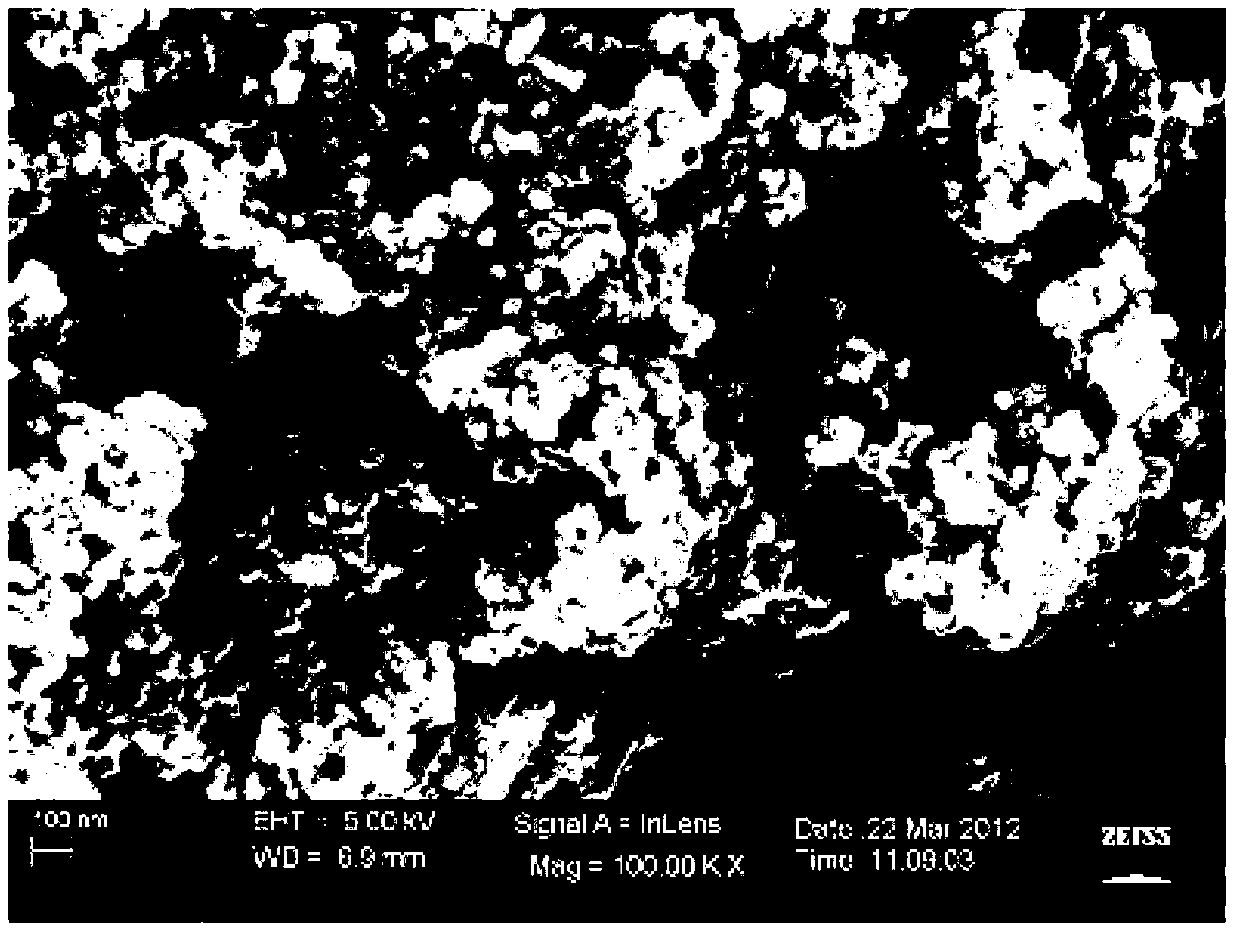Preparation method of indole-modified macroporous carbon supported transition metal catalysts
A transition metal, macroporous carbon technology, applied in catalyst activation/preparation, physical/chemical process catalysts, chemical instruments and methods, etc., can solve the problems of less research and poor catalyst performance, and achieve good conductivity, uniform distribution, low cost effect
- Summary
- Abstract
- Description
- Claims
- Application Information
AI Technical Summary
Problems solved by technology
Method used
Image
Examples
Embodiment 1
[0020] Example 1: Preparation of macroporous carbon
[0021] Weigh the hydrophilic nano-CaCO according to the mass ratio of 1:1 3 (15-40 nm) and 10 g of glucose each, add 100 mL of deionized water, and mix with ultrasonic vibration for 30 minutes to dissolve the carbon source material and mix with nano-CaCO 3 Disperse evenly, heat to evaporate water, and then cure at 160°C for 6 hours. The cured product was heated to 800 °C under the protection of nitrogen atmosphere, and carbonized at constant temperature for 2 hours. The carbonized product was successively washed with 5 wt% hydrochloric acid, 80 o C was washed with sodium hydroxide solution (concentration: 30 wt%) and deionized water, and dried at a constant temperature at 120 °C for 4 hours to obtain macroporous carbon materials.
[0022] When glucose is replaced by sucrose, starch, cyclodextrin, polyvinyl alcohol, polyethylene glycol, polyacrylic acid, and water-soluble cellulose in sequence, the pore size and porosity...
Embodiment 2
[0023] Example 2: Preparation of indole-modified macroporous carbon-supported noble metal catalyst
[0024] Weigh the hydrophilic nano-CaCO according to the mass ratio of 1:1 3 (15-40 nm) and 10 g of sucrose each, add 100 mL of deionized water, and mix with ultrasonic vibration for 30 minutes to dissolve the carbon source material and mix with nano-CaCO 3 Disperse evenly, heat to evaporate water, and then cure at 160°C for 6 hours. The cured product was heated to 800 °C under the protection of nitrogen atmosphere, and carbonized at constant temperature for 2 hours. The carbonized product was successively washed with 5 wt% hydrochloric acid, 80 o C was washed with sodium hydroxide solution (concentration: 30 wt%) and deionized water, and dried at a constant temperature at 120 °C for 4 hours to obtain macroporous carbon materials.
[0025] The macroporous carbon material was crushed to a particle size of 100-400 mesh, 2 g of macroporous carbon was placed in a hydrothermal re...
Embodiment 3
[0026] Example 3: Preparation of indole-modified macroporous carbon-supported non-noble metal catalyst
[0027] Weigh the hydrophilic nano-CaCO according to the mass ratio of 1:1 3 (15-40 nm) and 10 g of starch each, add 100 mL of deionized water, and mix with ultrasonic vibration for 30 minutes to dissolve the carbon source material and mix with nano-CaCO 3 Disperse evenly, heat to evaporate water, and then cure at 160°C for 6 hours. The cured product was heated to 800 °C under the protection of nitrogen atmosphere, and carbonized at constant temperature for 2 hours. The carbonized product was successively washed with 5 wt% hydrochloric acid, 80 o C was washed with sodium hydroxide solution (concentration: 30 wt%) and deionized water, and dried at a constant temperature at 120 °C for 4 hours to obtain macroporous carbon materials.
[0028] The macroporous carbon material was crushed to a particle size of 100-400 mesh, and 2 g of macroporous carbon was placed in a hydrothe...
PUM
| Property | Measurement | Unit |
|---|---|---|
| particle diameter | aaaaa | aaaaa |
Abstract
Description
Claims
Application Information
 Login to View More
Login to View More - R&D
- Intellectual Property
- Life Sciences
- Materials
- Tech Scout
- Unparalleled Data Quality
- Higher Quality Content
- 60% Fewer Hallucinations
Browse by: Latest US Patents, China's latest patents, Technical Efficacy Thesaurus, Application Domain, Technology Topic, Popular Technical Reports.
© 2025 PatSnap. All rights reserved.Legal|Privacy policy|Modern Slavery Act Transparency Statement|Sitemap|About US| Contact US: help@patsnap.com

